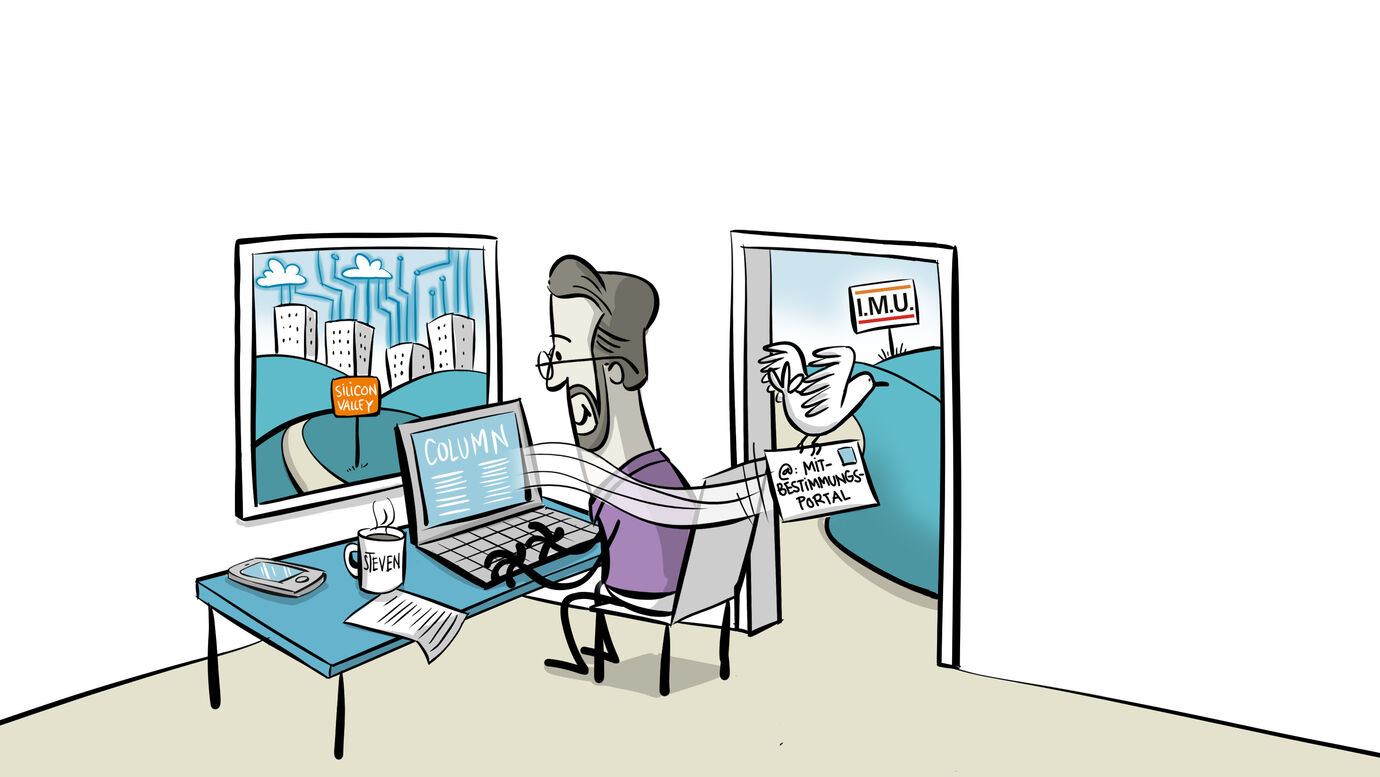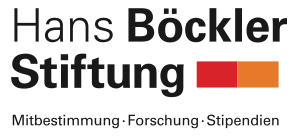Column
Can the EU and the US protect their 21st century workforces?
Transatlantic efforts to regulate digital platform companies and their precarious workers have taken halting steps in recent months – but more must be done.

It’s been 10 years since the gig economy rose to prominence amidst great techno-optimism. Initially, media outlets like the New York Times and Fortune, along with leaders like President Barack Obama in the US and European Commissioner Neelie Kroes in the EU, sung its praises as the vanguard of the future. The promise of the gig economy was that workers would have flexibility to work when they wanted; “the work will come to you on your smart phone” was the slogan of the so-called “sharing economy,” including for occupations ranging from taxi drivers to food delivery to computer programmers to hoteliers, janitors, housecleaners and day laborers.
Companies like Uber, Lyft, Airbnb, Task Rabbit, Upwork, Deliveroo, Bolt, Lieferando and dozens of other “digital platforms” were viewed as the latest hot prospects of pioneering capitalism, the darlings of innovation. Workers who found work on these platforms were formally classified as independently self-employed, even though many of them worked exclusively for a particular platform company and were clearly dependent workers.
But hey, at least consumers could get a taxi cab, or food delivered or a place to stay at the touch of an app. What could go wrong? I wrote two books about what was to come, Raw Deal: How the Uber Economy and Runaway Capitalism Are Screwing American Workers and Die Startup Illusion: Wie die Internet-Ökonomie unseren Sozialstaat ruiniert.
Those workers could be fired by algorithm.
It took about three years, until 2017 or so, for the bloom to start falling off the rose and reveal the many thorns. Amidst charges of “surveillance capitalism,” the gig economy turned out to be just the latest corporate swindle of workers, using the state-of-the-art digital technologies specifically designed to further reduce workers’ wages, labor protections and a safety net. For millions of precarious workers, management did not have to negotiate with worker representatives; indeed those workers could be “fired by algorithm.” These digital platforms were revealed to have no allegiance to the social relationship between employers and employees, or concern about their toxic impacts on society. These companies were redesigning the corporation and its business practices in a way that ultimately undermines the very society that they purport to be leading into the future.
It took another three years until worker advocates, labor unions and their legislative allies began to respond with new laws designed to reign in the abuses. In the US, the federal government under both the Obama and Trump administrations was fooled by the mistaken belief that these companies and their toxic business models represented “innovation.” So instead a few states like California took the lead.
In the EU, authorities also took a hands-off approach, leaving it to member states to respond legislatively. Most member states already had stronger labor protections than in the US, so the general sense I heard from countless EU and member state officials in 2017-19 was that not much needed to be done.
But slowly over time the Silicon Valley-inspired companies encroached into EU markets, even those where their services supposedly didn’t exist. I recall in Berlin in 2018, where Uber was not officially operating, yet a friend showed me his Uber app and there was a dozen Uber taxis prowling around his neighborhood, looking for fares (I wrote about this for Mitbestimmungsportal in October 2018). These companies are like rust – they never sleep in their efforts to corrode and find loopholes in EU and member state laws.
Regulatory relief finally arrives
Finally, 10 years after the gig economy’s transformation from unknown startups to globally dominant platforms, the EU recently passed its first piece of major legislation, the Platform Worker Directive (PWD) in March 2024. The PWD is aimed at preventing the misclassification of workers as “independent contractors” or “solo self-employed,” as well as rein in AI/algorithmic abuses in the workplace. And in January 2024, the Biden administration enacted a new administrative rule aimed at cracking down on misclassification of workers and bogus self-employment. Previously in 2019, California already had passed its own state legislation designed to prevent misclassification (I wrote about California’s law for Mitbestimmungsportal in December 2019).
The cavalry had finally arrived after 10 years of cowboy capitalism.
Having three different misclassification laws allows a useful comparison to try and understand which of these laws might be most effective. Beyond the actual letter of the law, the other crucial component is whether the law allows or hinders its own enforcement.
On comparison, while each of the laws have their strengths and weaknesses, the EU’s Platform Worker Directive is missing a key element that greatly weakens it. In its final stages, just before passage, the directive was watered down by special interests – including certain member states – which may well make the directive difficult to enforce.
California leads the way
The California law, AB 5, appears to be the strongest of the laws and it may be the most straightforward to enforce. AB 5 has mandated a stringent, three-pronged “ABC test” that must be used to determine wrongful worker classification claims. Under the ABC test, the presumption is that all workers are employees (with the exception of certain occupations such as physicians, dentists, psychologists, lawyers, accountants, real estate licensees and some other occupations). The burden is on the employer to demonstrate the independent contractor status of the worker. To prove its claim, an employer must demonstrate and document that the worker satisfies all three criteria of the ABC test. These include:
- the worker is free from control and direction in the performance of services; and
- the worker is performing work outside the usual course of the business of the hiring company; and
- the worker is customarily engaged in an independently established trade, occupation, or business.
This three-pronged test has greatly simplified and clarified the rules for deciding independent contractor status. Since the passage of AB 5, worker misclassification lawsuits have been steadily rising in California, and labor experts expect to see this continue. Workers who believe they have been misclassified now can file a complaint with the California Labor Commissioner and also file a lawsuit, seeking damages against the employer over unpaid wages, unpaid overtime, unpaid meal and rest breaks, as well as penalties and interest.
Uber, Lyft and DoorDash led a successful campaign in California to exempt ride-hailing and food delivery drivers
Employers also can face civil penalties of $5,000–$15,000 per violation for intentionally misclassifying workers. Some recent settlements have topped $100 million. In California, this criteria-driven approach for whether a worker is an employee or a contractor has inspired worker actions to legally enforce their rights.
However, AB 5 was partially undermined when Uber, Lyft and DoorDash led a successful ballot initiative campaign in California, spending over $200 million to exempt ride-hailing and food delivery drivers from AB 5 coverage. The California Supreme Court will soon decide whether to strike down that law as unconstitutional. (I wrote about this voter initiative, known as Proposition 22, for Mitbestimmungsportal in August 2021).
The Biden administration takes its cue from California
The Biden administration’s new administrative rule regarding how to decide if a worker is an employee or contractor went into effect on March 11. It was influenced greatly by California’s law – in fact, the acting federal Secretary of Labor, Julie Su, was most recently the Secretary of the California Labor and Workforce Development Agency. The Biden executive order repealed rules enacted by President Donald Trump just before he left office in 2021 that made it much easier for businesses to classify workers as independent contractors.
Instead of a three-prong test, the Biden rule has a six-prong test, including the degree of control a company has over a worker, the permanence of a job, the degree of skill and initiative required, whether work performed is integral to a company's business, and more. Since it is so new, its ultimate impact is unknown (and if Trump beats Biden for the presidency in November 2024, it will surely be reversed). Assuming this rule is maintained for a few years, it will likely trump California’s Proposition 22 carve-out and re-classify thousands of drivers for Uber, Lyft, DoorDash and many other companies as employees rather than contractors, entitling them to minimum wages and overtime pay.
The business community is unsurprisingly gearing up to fight this new federal rule. The US Chamber of Commerce and pro-industry umbrella groups like Coalition for Workforce Innovation (whose members include technology and transportation giants such as Uber and Lyft) are opposing the new rule, filing at least five lawsuits to halt its enforcement.
The EU’s undefined directive
Compared to these versions passed in the US, the EU’s Platform Worker Directive may well be hampered by its lack of specific details. During the trialogue process between the engaged EU institutions and the 27 member state representatives, a main point of contention in the months-long negotiations was the presumption of employment status of platform workers. The original draft had five indicators, much like the California and Biden regulations. But under intense pressure from the pro-business and platform lobbies as well as France and Germany, the five-prong criteria was scrapped entirely. Instead, it has been left up to the 27 member states to draft their own criteria. The directive’s goal is “minimum harmonization” across the EU, as it merely states that platform workers are presumed to be employees if there are “facts indicating control and direction,” as defined by national laws, collective agreements or EU case law.
The German traffic-light coalition government, hamstrung by the liberal FDP’s pro-business orthodoxy, refused to agree to a criteria-driven approach. Consequently, the German government abstained from the EU vote. France, at the insistence of President Emmanuel Macron, was the only member state to vote against it (the Germany-France tandem also played a crucial role in weakening the recent EU law on artificial intelligence, the AI Act).
Companies will undoubtedly try to play one member state against the other, opening up loopholes
While the directive does require all countries to have as a starting point a limited presumption of employment, the flexibility given to member states is likely to be a poison pill that will negatively impact all member states. With platform companies such as Uber, Lieferando, Bolt and others having vast resources for lobbying, this creates a real risk that watered down standards could be applied in different member states as the directive is translated into national laws.
Companies will undoubtedly try to play one member state against the other, opening up loopholes that not every member state will close. So the directive may well create a continental hodgepodge of law and a race to the bottom, instead of unifying the member states in identifying a misclassified worker. Indeed, a Belgian law on platform work has many similarities to the EU directive, including no specific implementing measures. Belgian union representatives have no mechanisms in place to take action against the platforms when they ignore the law. More than a year after the law was passed, no platform worker has been made an employee. The Spanish Presidency’s draft directive provided for such mechanisms – for example, that the authorities should inspect platform companies where workers have been classified as self-employed – but these mechanisms were not included in the final text. So the EU directive lacks clear implementation guidelines.
One positive to the directive is that it has helpfully restricted the use of AI and algorithmic management over precarious platform workers. Workers such as food delivery workers, Amazon and Uber drivers and others, receive their orders and performance monitoring via algorithm-driven apps instead of human supervisors. The new directive sets limits and enhances transparency by banning the processing of biometric personal data that could be used to infer personal qualities like race, migration status, mental health, religious affiliation and more. Also, important decisions regarding compensation, termination or blocking of accounts must always be made by a human being. Another provision states that the people who are active in platform work must be allowed communication channels to get in touch with other platform employees (the Biden administration issued similar federal regulations on AI in the workplace via an executive order in October 2023).
Nevertheless, many labor and political leaders are unhappy with this watered-down version. Allowing each member state to establish its own criteria “will lead to fragmentation and a lack of legal certainty for platforms operating in different member states,” says Bulgarian Labor Minister Ivanka Shalapatova. Luxembourg's Labor Minister Georges Mischo agrees, saying his country would have preferred European-wide criteria to prevent companies from shopping from member state to member state, cherry picking the most favorable classification criteria for their business interests.
Even the German digital industry association Bitkom criticized the changes. “Platform work must be regulated uniformly in Europe,” said Bitkom in a statement, “so that the internal market is not fragmented by national legislation... As is so often the case, the result will be a patchwork of national regulations that will create new legal uncertainty for everyone involved.”
Trade unions welcome the agreement on the Platform Directive
The German services union ver.di issued a statement saying “The platform directive brings real improvements and also strengthens solo self-employed people” because, in ver.di’s view, it will try to reverse “the burden of proof” over reclassification. It will “also ensure greater transparency and introduce new rights regarding algorithmic management.”
Since the proposed law nearly died in February, many labor advocates appear to be satisfied to get something rather than nothing, seeing it as a start that can be built upon. In addition,ver.di’s positive assessment may have been influenced, at least in part, by the upcoming European Parliament elections in June, since ver.di also praised the EU’s “added value to the world of work” and encouraged people to “go to the polls … and vote for the parties that have the interests of employees in mind.”
The European Transport Workers’ Federation (ETF), a pan-European labor organization which unites transport trade unions from the EU, issued a more cautious endorsement of the PWD. The ETF called it “a step forward” even though the text is “nowhere near as strong as we would have liked” because it did not provide “a general presumption of employment or strict harmonized criteria at EU level.” ETF directed special blame at France for weakening the directive. However the ETF praised the inclusion of ”strong trade unions rights to represent platform workers and start reclassification proceedings.”
The EU's Platform Directive may prove to be a step in the right direction, but only if it is the start of a more far-reaching process.
The Platform Workers Directive will take another two years to implement in all the member states, and even longer to see which member states implement the PWD effectively and which enforcements are weak and have been undermined by industry influence. Each member state can, in effect, act as laboratories for each other to see what works. It’s important that trade unions and other pro-labor actors -- both at national and coordinated at EU levels -- keep a critical eye on the implementation process. Unions should use their levers to prevent the large platform companies from watering down the legislation and playing one member state against another.
The EU's Platform Directive may prove to be a step in the right direction, but only if it is the start of a more far-reaching process. The stakes are high and hopefully the EU and the US will learn from each other’s experiences and together forge a transatlantic path toward the right regulations that effectively protect workers’ rights and allow a crackdown on bogus self-employment.
German Language Version
-
Column
AI's impact on US workplaces continues to accelerate
-
Column
Trump and Musk mounting furious attack on labor rights and workers
-
Column
US support for codetermination from an unlikely source – conservative Republicans
-
Column
Can the EU and the US protect their 21st century workforces?
-
Column
Massive tech layoffs continue as companies retool for AI
-
Column
US labor unions strike over impacts of AI and new technologies
-
Column
Antitrust law is (finally) being enforced again in the U.S.
-
Column
Employer surveillance against workers spreads
-
Column
If it seems too good to be true … it probably is
-
Column
Helping gig workers help themselves
-
Column
Workers of the World…quit?
-
Column
Will US labor unions stand by Uber drivers and gig workers?
-
Column
Stirrings of union organizing in the “paradise” of Big Tech
-
Column
Will Pres. Joe Biden restore worker and union power?
-
Column
Corona-fied: employers spying on remote workers in their homes?
-
Column
The challenges of the post-coronavirus workforce
-
Column
Amazon workers fight back
-
Column
A blow against "bogus self-employment" and gig economy
-
Column
Renewing Worker Cooperatives for the Digital Age
-
Column
Codetermination takes the spotlight in the US
-
Column
Who will fight for the 'good jobs' economy?
-
Column
Trump attacks workers and the labor movement in the US
-
Column
The distributed workforce: what will jobs of the future look like?
-
Column
The "Uber way" of precarious work



